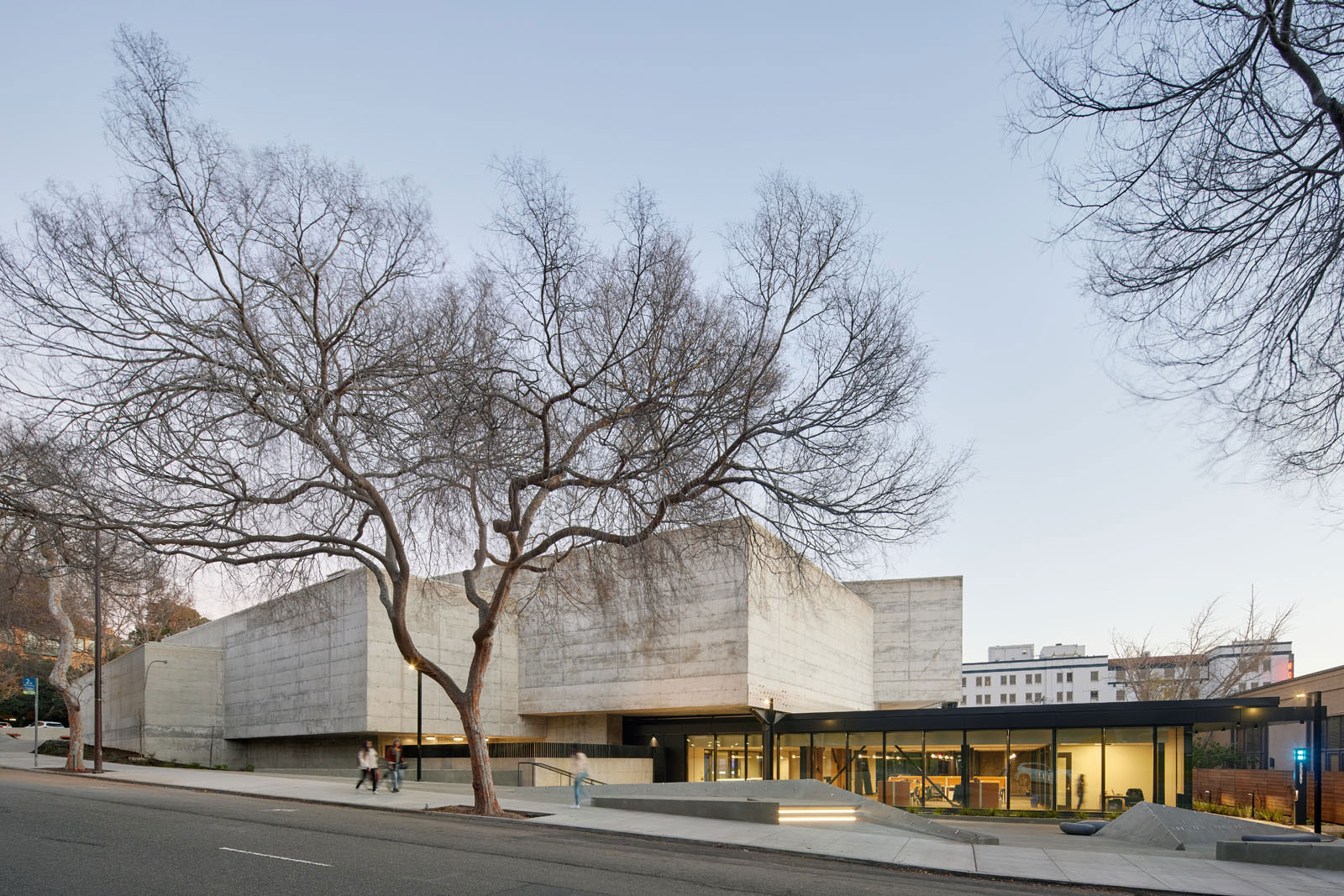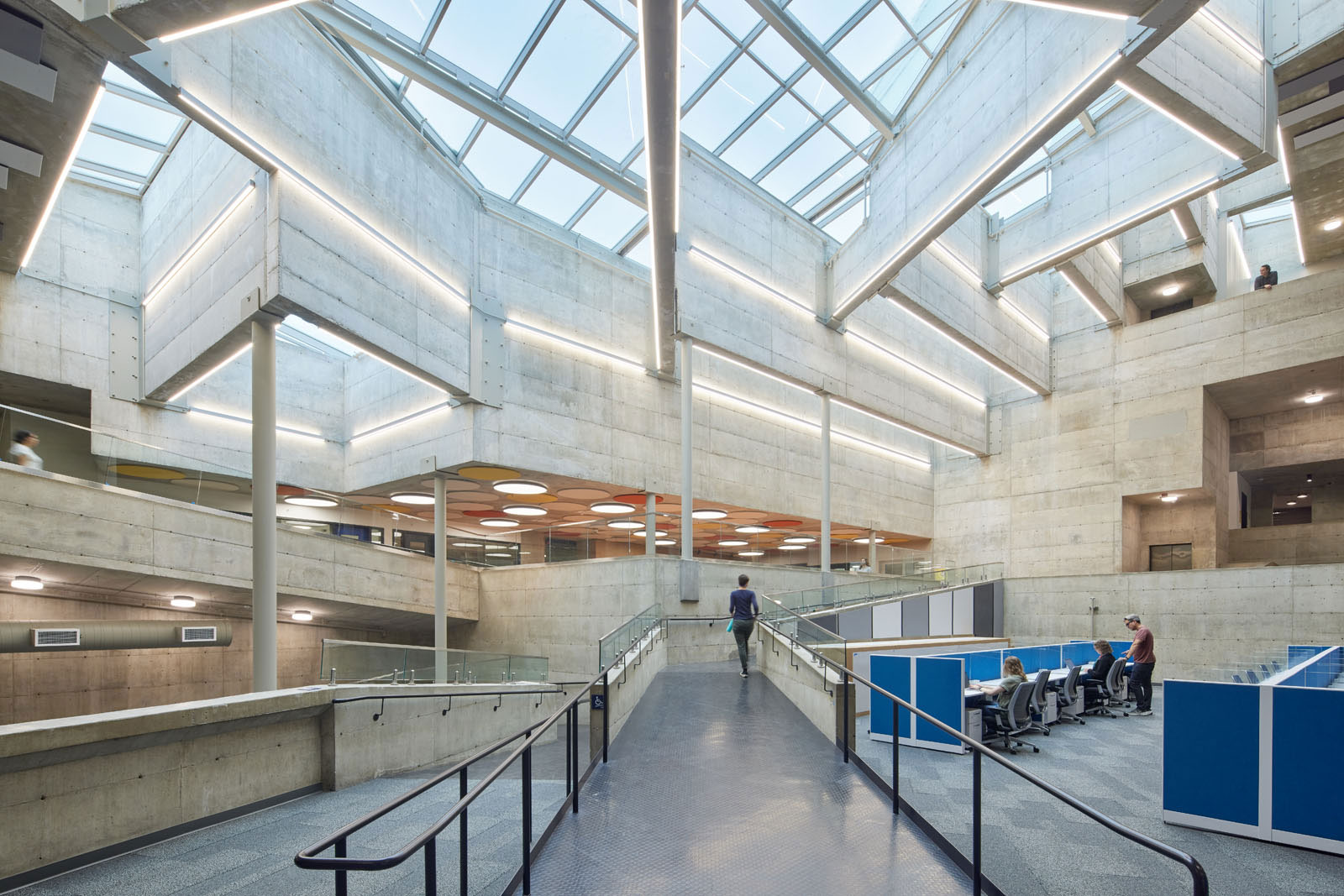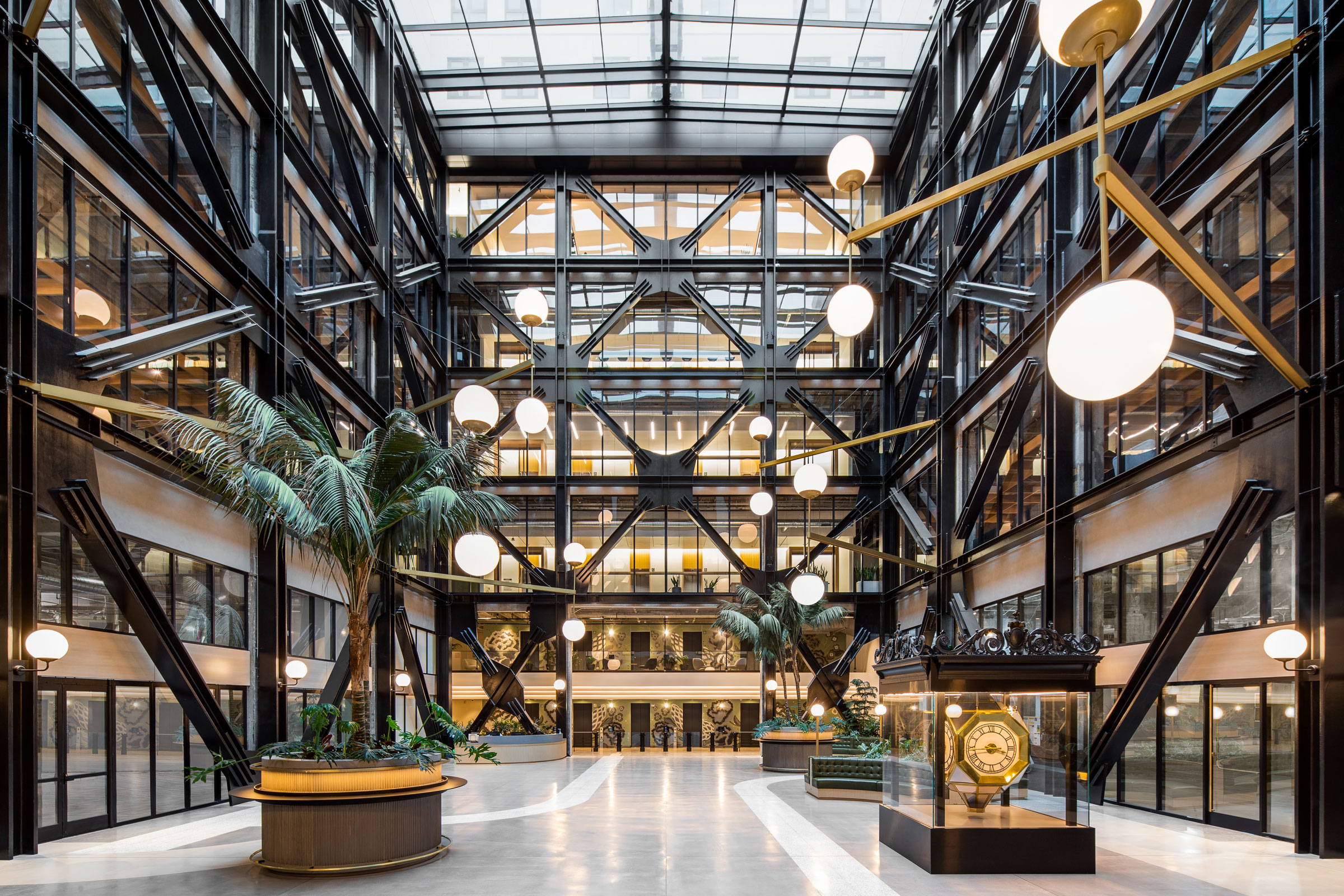Story at a glance:
- It takes a new energy-efficient building roughly 65 years to save the amount of energy lost when demolishing an existing building.
- Reusing existing materials can decrease energy usage and pollution from the manufacturing and transportation of new materials.
- MBH Architects redesigned the Berkeley Art Museum & Pacific Film Archive to become a life-science laboratory for students and local entrepreneurs.
Adaptive reuse today takes on many forms, from preserving heritage to transforming vacant buildings into opportunities to revitalize communities. The most significant advantage is that adaptive reuse can give defunct buildings a new lease on life while having a sustainable advantage.
According to the EPA, a new energy-efficient building takes about 65 years to save the amount of energy lost in demolishing an already existing building. Repurposing old buildings reduces the need to construct new buildings by taking advantage of existing infrastructure—a process that requires land, energy, and materials.
In fact, adaptive reuse projects have the potential to save historical structures and other buildings of significance by making them useful to communities again while bringing them up to modern standards and codes. Just as we honor famous works of art and one-of-a-kind antique furniture, historic buildings embody craftsmanship and skill that may no longer be widely used today.
Sustainability
Among the many benefits adaptive reuse projects provide, they decrease the scope of demolition, construction, and the volume of new materials needed. Less demolition means less environmental pollutants resulting from the demolition itself, less debris going into landfills, and less energy required as part of the overall reconstruction process.
In most cases, this equates to fewer materials going into the project’s construction—conserving resources and saving funds. It also decreases emissions from the transportation of debris, both to landfills or to be repurposed, and of new resources to the job site. By reusing existing materials, adaptive reuse projects can decrease energy usage and pollution resulting from the manufacturing and transportation of new materials.
Saving a University Building

The Bakar BioEnginuity Hub now calls a former Berkeley Art Museum building home—a building that was in danger of being demolished until further review by MBH Architects. Photo by Bruce Damonte Photography
Berkeley Art Museum & Pacific Film Archive on the University of California Berkeley campus was a nationally registered historic place, but the building was deemed seismically unsafe, sitting about a mile from a major fault line, and the museum determined that the necessary retrofitting could not be accomplished without compromising the exhibit spaces. Facing mounting pressure to tear down the structure in favor of reuse of valuable land in the heart of campus, we were hired to determine if the building could be converted into a structurally sound, modern life science laboratory.
After concluding that it was feasible, MBH Architects redesigned the building as a life-science laboratory for students and local entrepreneurs. Now called Bakar BioEnginuity Hub, the building was brought up to code while preserving its historically significant features, making it a modern hub for students and researchers doing innovative experimentation.
Utilizing an egalitarian approach to the industry, the project provides shared equipment and co-working space to startups who may otherwise be barred by the prohibitive cost of entry into the life science field. With an overhaul of mechanical systems, the building is designed to achieve net carbon neutrality and is undergoing LEED Gold certification. The project will serve as an example for other campuses and private companies to reuse existing structures for new modern uses, an economical and financial decision.
Transforming Cities
Bringing defunct historic buildings back to life revitalizes neighborhoods by providing various opportunities to emerging commercial sectors like affordable housing, life science research facilities, micro-fulfillment centers, and retail health care. As communities shift to working remotely and shopping online, these offerings take advantage of new commercial opportunities in redeveloped mixed-use spaces while leveraging sustainable outcomes.
The pandemic has accelerated changes to our daily lives and routines in so many ways, many of which have dramatically shifted how we think about proximity to goods, services, and work. E-commerce was replacing brick and mortar long before the pandemic, but between months of quarantine and limited access to services, a product-driven economy solidified the need for delivery, no longer a convenience, in our everyday lives.
Micro-fulfillment centers are just one building type on the rise within adaptive reuse. These facilities support this increasing retail logistics model while providing a real estate solution to under-utilized stores and malls that may have otherwise sat vacant, potentially falling to disrepair and/or demolition. These stores and malls provide two critical factors to successful operations—proximity to customers in densely populated areas and ample parking for transportation vehicles.
The pandemic also created widespread awareness of flaws and opportunities in the American health care system. Retail medical was already on the rise, but with unprecedented demand and a flood of life science funding, medical clinics, offices, and labs are taking over many anchor spaces as the commercial sector downsizes their stores, malls, and workspace footprint.
Before work-from-home became a daily part of our vocabulary, workspace was dominating as an anchor in mixed-use developments. With many companies becoming comfortable with remote employees, private workspace has shifted toward the coworking model and consolidated to smaller offices. Multi-family housing has the opportunity to convert underutilized buildings that once were developed for commercial use into much needed housing units. Especially in growing cities in need of affordable and rental units, multi-family developers can take advantage of existing buildings to reduce construction costs and market units as a unique and local living experience.
Supporting a Sense of Place

Inside the new Bakar BioEnginuity Hub in California, designed by MBH Architects. Photo by Bruce Damonte Photography
In addition to providing a sense of connection to locals and visitors, historic places link us to a city’s history and character. The architectural landscape of a place is often shaped by the geography, community, and culture that is unique to each city and town. Historic renovation projects aim to preserve these special places that are unique to a city and relevant to visually telling the city’s history.
Bakar BioEnginutiy Hub was a significant cultural staple of the local community, as the Berkeley Art Museum and Pacific Film Archive for nearly 50 years, and widely revered within the architectural community as one of the finest examples of brutalist design. The adaptive reuse of Bakar BioEnginuity Hub was an effort to save a historic landmark that was still important to the community while designing a functional space for the nearby university and local life science research industry.
Similarly, the main objective of the adaptive reuse of Uptown Station in Oakland, California was to honor the original design of the 1928 structure, initially constructed as the HC Capwell Co. Department Store. As one of the largest stores of its time on the West Coast, it quickly became a local destination for the Bay Area and remained a steadfast shopping destination in downtown Oakland through the 20th century. It endured multiple renovations and expansions as technology evolved and the company changed hands. Much of the original character that made the design unique was lost, but the building was still standing tall in the growing metropolis. The design team saw the potential in reintroducing Uptown Station as a mixed-use development for office and retail tenants.
Uptown Station has been an Oakland icon for nearly a century, seeing the city through its many evolutions. It is now reopened as a hub for dining, shopping, and working, filled with custom fixtures and public murals from Oakland native artists. It’s the result of a responsible repurposing of a dilapidated building into one with true value for the local community and businesses without the traditional teardown approach.
This project was in close proximity to MBH Architects’ headquarters, and for much of the team it was a recognizable local landmark—with some even remembering the grandeur of the former department store from childhood. From the project’s onset the design team envisioned the sociological impact Uptown Station would have on the Oakland community, for the project team, clients, and future visitors. It takes what is already special within the city and creates a standout mixed-use development that provides opportunities in the current landscape
Adaptive reuse is also a good solution in cases where a community has outgrown or deprioritized a building’s specific use. Across the bay the George W. Bauer malting plant supplied malt to Bay Area breweries for nearly a century and was granted landmark status by the City of San Francisco in 1981. As the urban area grew, the need for housing units became more important to the central core of a city than other industrial uses, which had moved operations elsewhere. MBH Architects was hired to convert the malt facility into multi-family housing in the heart of San Francisco’s North Beach neighborhood. The final design honored the historic elements of the malting plant by redesigning the silos and grounds into communal outdoor space while creating open and welcoming lofts to take advantage of the seven-story facility.
Adaptive Reuse Tomorrow

The exterior of Uptown Station in Oakland, CA. Photo by Tyler Chartier
When designing for the future, developers must consider the financial and environmental advantages of utilizing existing structures in our communities. The building sector accounts for roughly a third of global fuel consumption, and in turn, adaptive reuse projects are becoming more popular as the benefits of capitalizing on embodied energy become more apparent. Adaptive reuse is a great way to breathe new life into under-utilized buildings and at the same time, can conserve their historic value and local resources.




